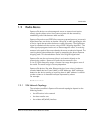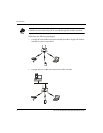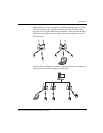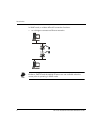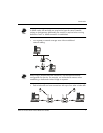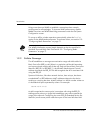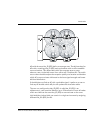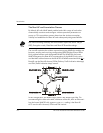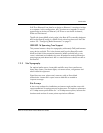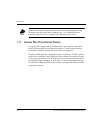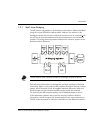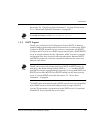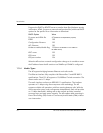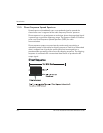
Introduction
AP-4131 Access Point Product Reference Guide 11
If AP D on Ethernet II has data for a device on Ethernet I, it requires a bridge
or a repeater. In this configuration, AP C functions as a repeater. To ensure
transmission to devices on Ethernet I, AP D has to use the AP A channel,
DTIM and TIM interval.
The AP with lowest WLAP priority value is the Root AP. To manually designate
AP B as the Root AP, assign it a WLAP Priority value less than
8000 Hex. See
section 2.5: ”Configuring Radio Parameters” on page 71.
IEEE 802.1d Spanning Tree Support
This protocol creates a loop-free topography with exactly ONE path between
every device and LAN. This is the shortest path from the Root AP to each
WLAP and LAN. If the connection between a WLAP and LAN fails, a new
route is calculated and added to the tree. All packet forwarding follows the
spanning tree path determined. APs in a network have to choose one AP as
the Root AP.
1.2.3 Site Topography
For optimal performance, locate MUs and APs away from transformers,
heavy-duty motors, fluorescent lights, microwave ovens, refrigerators and
other industrial equipment.
Signal loss can occur when metal, concrete, walls or floors block
transmission. Locate APs in open areas or add APs as needed to
improve coverage.
Site Surveys
A site survey analyzes the installation environment and provides users with
recommendations for equipment and its placement. The optimum placement
of 11 Mbps access points differs for 1 or 2 Mbps access points, because the
locations and number of access points required are different.



